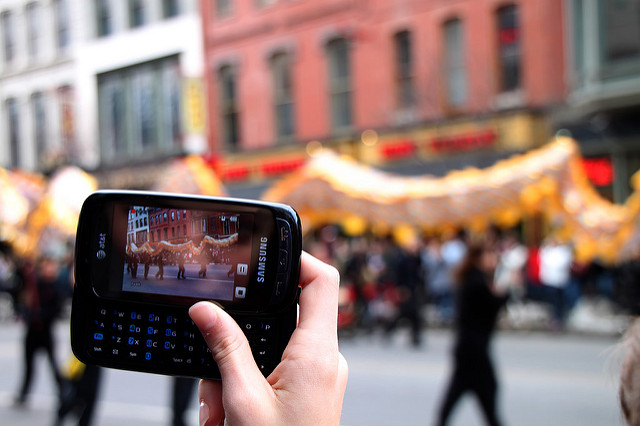
You might also like:
Don’t use the default video app
Nearly all the video on the Atlas & Boots YouTube channel was shot using the default video app on the iPhone. A far better option is a premium video recording app like Filmic Pro. At $9.99 (£7.99), it’s not cheap but the difference in quality is worth the money.
Do learn basic techniques
Smartphones make it so easy to point and shoot, but learning some basic framing techniques will improve your outdoor video vastly.
Consider storyboarding
In general, I just turn up and shoot. Sometimes, I get lucky like when Mount Yasur decided to blow two seconds into my intro below, adding a dash of drama. Other times, I end up with a hotchpotch of footage.
To take your outdoor video to the next level, consider storyboarding it first. What is the main point of the video? What is the master shot? What shots will complement it? Who will you shoot? What will they do or say? Do you need to shoot it several times?
This doesn’t need to be Stanley Kubrick level planning; just a bit of forethought will likely be enough.
Put your phone on airplane mode
On some smartphones, an incoming call will pause filming by default. This can be frustrating if you’ve waited a long time for a particular shot.
Turn on airplane mode to prevent unwanted distractions and interruptions. This will also help maintain battery life.
Manually set exposure and focus
Point-and-shoot can work well if filming in natural light that’s not too bright. In most cases, however, you would do well to manually set and lock the exposure and focus.

This will produce smoother and more consistent footage. The user manual for your video app will tell you how to do this.
Learn lo-fi stabilisation
If you have capacity for extra equipment, consider a Glif tripod mount for smartphones. The Glif adjusts to fit the size of your phone and case and can be attached to a tripod for smooth outdoor video.
However, if (like me), you want to keep your backpack to the bare minimum, learn some lo-fi stabilisation techniques. Instead of holding up your smartphone, use both hands and lock your elbows into your body for stability. This won’t eliminate involuntary movement but it will minimise the shaky cam effect.
To record movement, move your entire upper body, not just the camera. This will record far smoother outdoor video.
Carry a portable charger
If you will be filming for any length of time on your smartphone, it’s a good idea to carry a spare battery or charger.
We at Atlas & Boots travel nowhere without an Anker PowerCore+ mini. As mentioned in 8 essential gadgets for safe travel, the Anker provides a full charge to most smartphones and at just bigger than a lipstick, is light and portable enough to keep in your daypack.
Without it, I wouldn’t have been able to capture everything I wanted on our Salkantay Trek to Machu Picchu.
Just keep filming!
Film as much as your smartphone memory will allow — not just the action but general views as well. Take plenty of footage of the walk in, the conversation, the landscapes and any interesting features along the way.
If you feel you’re filming too much, I’ll bet you’ll wish you had more footage when you get home — just like I did with this video of Mauna Kea.
If you are concerned about filling up your memory, consider curating on the go. On Mount Yasur Volcano, I filmed a minute at a time and then erased it if the volcano didn’t blow. This was a better strategy than filming continuously for five minutes and catching an explosion at the end, which would waste four minutes’ worth of space.
Be careful not to be too ruthless though. More is more when it comes to the editing stage. And, of course, make sure you don’t miss an excellent shot because you’re too busy fiddling with your footage.
Add commentary later
Bad audio can ruin great outdoor video footage, so consider staying silent while filming, then adding your commentary later over the ambient sound. This will ensure crisper narration.
If live commentary is important, you have two options. The lo-fi solution is to try and shield the microphone from the wind and speak directly into it. The better solution is to buy a microphone for your smartphone which, while more expensive, will ensure far better audio. Try the AmpRidge MightyMic S or Rode SmartLav+.
Get good at editing
In much the same way I’m suspicious of multi-cuisine restaurants, I’m also dubious about people who claim to be a ‘writer, photographer and artist’ or somesuch.
To be good — really good — at any one of those things takes time and dedication. Saying you’re all three is basically admitting you’re a jack of all trades, master of none. Based on this philosophy, I’ve long been resistant to learning any video editing.
I’m now coming to realise that I can improve my video-editing skills without aiming for videographer status. I’ll be starting with the basic mechanics of Final Cut Pro X. I’ll then move on to the finer aspects of video editing (soundtrack, sequencing etc).
Source: matadornetwork.com



